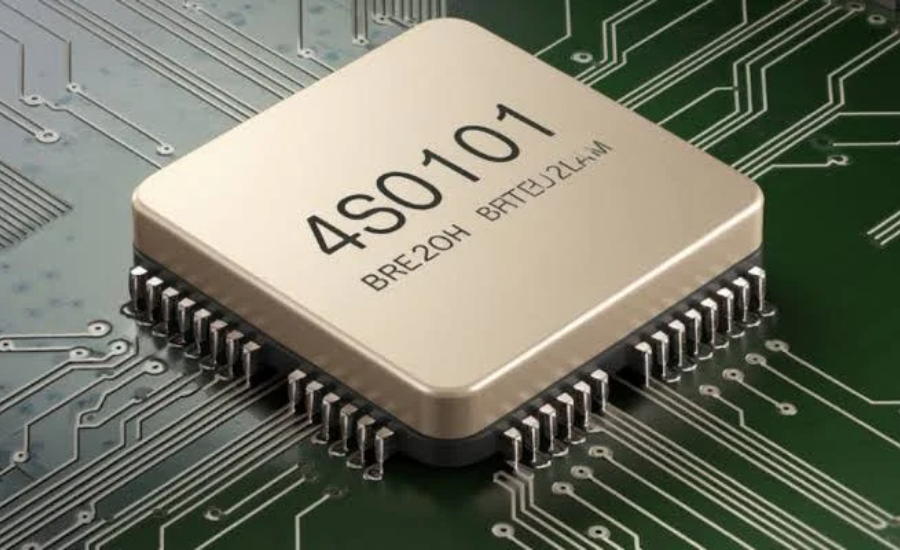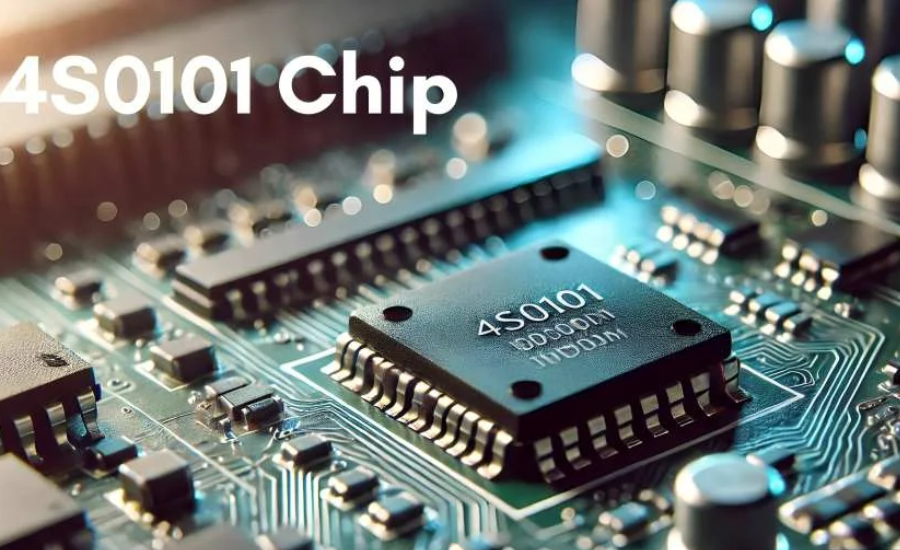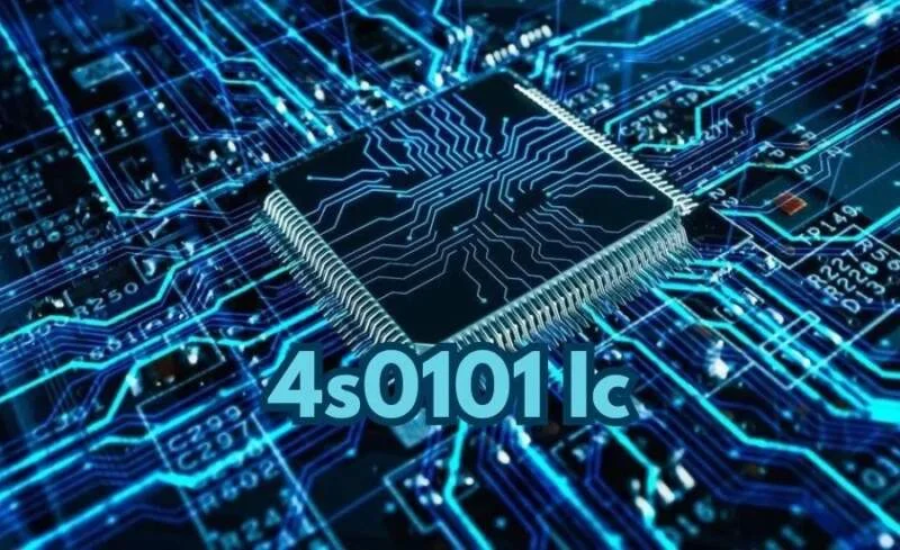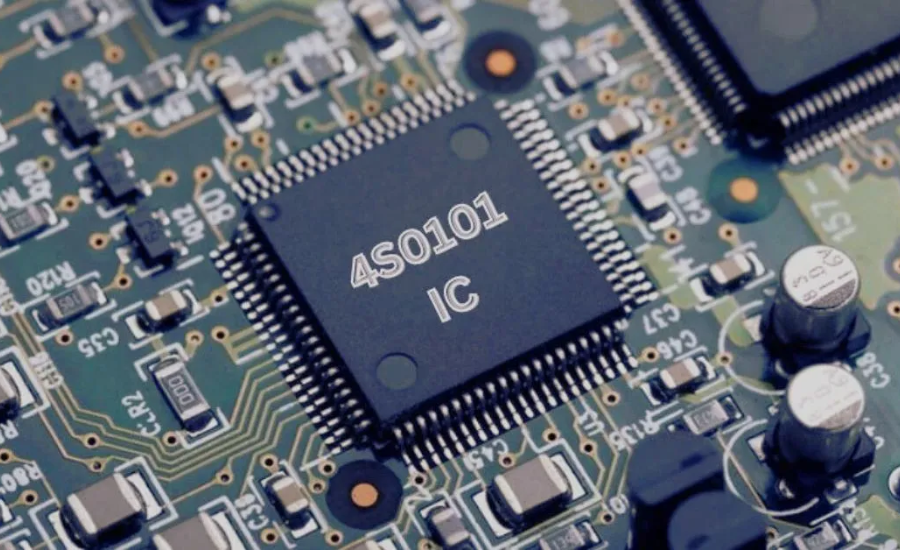In the realm of electronics, various components play crucial roles in the functionality of devices, and the 4S0101 integrated circuit (IC) is one such component that often goes unnoticed, yet significantly impacts our daily lives. Whether you are a seasoned tech expert, an electronics hobbyist, or simply curious about integrated circuits, this article will provide an in-depth look at the 4S0101 IC, explaining its function and importance in contemporary electronic applications.
The 4S0101 IC serves as a vital element within many electronic systems, contributing to their efficiency and performance. This article aims to elucidate what the 4S0101 IC is, its operational mechanisms, and its pivotal role in modern technology.
Understanding The 4S0101 Integrated Circuit
Integrated circuits (ICs) are fundamental components in today’s electronics landscape. These miniature devices integrate multiple electronic elements, such as transistors, diodes, and capacitors, onto a single chip, enabling complex functionalities within compact devices. Among these, the 4S0101 IC stands out as a specialized component, particularly essential for systems that require power supply regulation and voltage management.
In this article, we’ll explore the 4S0101 IC—its function, operational principles, and significance in various electronic applications. By the conclusion, you’ll gain a comprehensive insight into why this seemingly minor component plays a vital role in ensuring the smooth operation of your electronic devices.
What Is the 4S0101 IC?
The 4S0101 IC is a low-power voltage regulator integrated circuit widely utilized in various electronic applications to regulate voltage levels and maintain a stable electrical output. You can think of it as a traffic director for electrical current, managing the flow to ensure that each component within a device receives the precise amount of power it needs. This regulation is crucial since an incorrect power supply—whether excessive or insufficient—can lead to component damage or failure.
Voltage regulators like the 4S0101 are particularly important in devices such as smartphones, laptops, and household appliances, as they provide stable power delivery. This stability not only enhances device longevity but also optimizes performance.
Notable Features Of The 4S0101 IC

Here are some key attributes that highlight the importance of the 4S0101 IC in numerous electronic systems:
- Low Power Usage: The 4S0101 is engineered for minimal power consumption, making it well-suited for battery-powered devices.
- High Efficiency: This IC ensures that energy loss is kept to a minimum, which is essential for energy-efficient applications.
- Voltage Regulation: It delivers a stable voltage output, regardless of variations in the input voltage, ensuring consistent performance.
- Compact Design: Its small size makes it ideal for integration into compact devices like wearables and embedded systems.
Applications Of The 4S0101 Integrated Circuit
The 4S0101 IC is known for its adaptability and high performance, making it suitable for a wide range of applications. Below are some typical uses of this versatile integrated circuit:
- Audio Systems
In the realm of audio equipment, the 4S0101 IC is utilized for switching audio signals while minimizing distortion. This functionality allows users to select from multiple audio sources, making it a crucial component in mixers and amplifiers. Its ability to preserve audio quality during transitions is a key benefit. - Communication Networks
The IC plays a significant role in communication systems by managing signal pathways. Its low on-resistance feature ensures that signals are transmitted clearly and without distortion, significantly improving communication quality. This reliability is essential in applications where clear signal transmission is critical. - Data Collection Systems
Within data acquisition systems, the 4S0101 IC is employed to switch between various sensors or data inputs. This feature facilitates effective data gathering and processing, making it an invaluable component in measurement and monitoring applications. - Instrumentation
The 4S0101 IC is also used in instrumentation tasks, including testing and measurement devices. It delivers dependable switching capabilities, ensuring accurate readings, which are vital in contexts that demand high precision. - Healthcare Devices
In the medical field, the 4S0101 IC is incorporated into diagnostic tools. Its capability to switch signals without introducing noise is crucial for maintaining the accuracy of medical measurements, thereby ensuring reliable diagnostics and effective patient monitoring. - Consumer Electronics
You’ll find the 4S0101 IC in various consumer electronics, such as remote controls and smart home devices. It supports efficient signal routing, enhancing both functionality and user experience in these gadgets.
Advantages Of The 4S0101 IC

The 4S0101 IC offers several benefits that make it a favored choice among engineers and product developers:
- Dependability
This integrated circuit is designed for consistent performance, ensuring reliable operation across diverse environments. Its robust nature and stable characteristics make it ideal for demanding applications. - Cost Efficiency
With its low power consumption and versatile applications, the 4S0101 IC helps reduce overall system costs. By optimizing power usage and enhancing functionality, designers can create efficient systems without exceeding budget constraints. - User-Friendly Integration
The IC is straightforward to integrate into existing designs, simplifying the development process for engineers. This ease of use helps shorten development cycles and reduce complexity, facilitating faster product launches. - Compact Form Factor
Thanks to its small size, the 4S0101 IC is well-suited for applications in environments with limited space. This compactness is particularly advantageous in portable devices where every millimeter of space is valuable. - Preservation of Signal Quality
With its low on-resistance and minimal distortion, the 4S0101 IC ensures the integrity of signals across various applications. This quality is crucial for maintaining the original signal clarity, especially in audio and communication technologies.
Design Considerations For The 4S0101 IC
When incorporating the 4S0101 IC into your designs, it’s essential to take several factors into account to ensure optimal performance:
Power Supply Management
- Voltage Connection: Verify that the Vcc pin is linked to the voltage level indicated in the datasheet to prevent operational issues.
- Decoupling Capacitors: Implement appropriate decoupling capacitors to enhance the stability of the power supply, ensuring smooth operation.
Addressing Configuration
- Address Planning: Strategically design the addressing scheme to prevent conflicts during read and write processes.
- Connection Integrity: Confirm that all address lines are correctly wired and configured to maintain system functionality.
Signal Quality
- Trace Length: Keep traces for address and data lines as short as possible to reduce signal degradation and latency.
- Termination: Properly terminate lines to eliminate reflections and ensure the integrity of the data being transmitted.
Common Problems And Troubleshooting For The 4S0101 IC
While the 4S0101 IC is designed for reliability, various issues may arise, especially in environments with extreme conditions or improper usage. Below are some typical challenges associated with this component:
Overheating
- Description: Overheating may occur if the load connected to the IC exceeds its rated power limits.
- Solution: Implement effective cooling solutions or reassess the power requirements of connected devices to prevent overheating.
Inconsistent Output
- Description: Fluctuations in output voltage can indicate that the IC is failing, often due to prolonged usage or exposure to varying temperature conditions.
- Solution: Regular monitoring and maintenance can help identify aging components, and replacement may be necessary to restore reliable performance.
Voltage Regulation Failure
- Description: In cases of power surges, the 4S0101 IC may struggle to maintain a stable voltage output, leading to potential damage to connected components.
- Solution: Employ surge protection measures and ensure that the IC is used within its specified voltage range to enhance its ability to regulate power.
In many instances, replacing the IC or improving the device’s cooling and ventilation can effectively address these issues, restoring optimal performance.
Future Prospects Of The 4S0101 IC

As we move deeper into an era characterized by rapid technological advancements, the 4S0101 IC is poised to expand its significance across various sectors. With the increasing prevalence of the Internet of Things (IoT), smart devices, and automated systems, the demand for integrated circuits that offer both efficiency and reliability is set to soar.
The Growing Importance of IoT
The proliferation of IoT technology is transforming how we interact with everyday devices. The 4S0101 IC, with its low power consumption and ability to regulate voltage effectively, can play a crucial role in this landscape. As smart devices become more commonplace in homes and industries, the need for components that ensure stable power supply and efficient data management is paramount. The 4S0101 IC can facilitate the seamless operation of these devices, enhancing their functionality and lifespan.
Enhancements in Smart Technology
Smart technology is not limited to consumer gadgets; it extends to various applications, including healthcare, agriculture, and transportation. The 4S0101 IC can contribute significantly to these advancements by ensuring reliable performance in critical applications. For instance, in medical devices, maintaining stable voltage is essential for accurate diagnostics and patient monitoring. In agriculture, smart sensors can leverage the 4S0101 IC to manage power efficiently, leading to better resource management and crop yields.
Automation and Industry 4.0
With the advent of Industry 4.0, the integration of automation and data exchange in manufacturing processes is on the rise. The 4S0101 IC is well-suited to support this trend by providing robust data management capabilities and high-speed processing. Its compact design allows for easy integration into various automated systems, enabling manufacturers to optimize operations, reduce costs, and enhance overall productivity.
Future Innovations
Looking ahead, the 4S0101 IC is likely to see innovations that further enhance its performance and capabilities. Advances in semiconductor technology may lead to improved versions of this integrated circuit, offering even greater efficiency and functionality. This evolution will enable engineers and designers to create more sophisticated electronic devices that meet the growing demands of modern applications.
In conclusion, the future prospects for the 4S0101 IC are promising, driven by the escalating need for efficient and reliable components in an increasingly connected world. As technology evolves, this integrated circuit is set to play a vital role in supporting innovations across various sectors, ensuring that devices operate smoothly and effectively.
FAQs About The 4S0101 IC
1. What is the primary function of the 4S0101 IC?
The 4S0101 IC primarily functions as a low-power voltage regulator. It ensures a stable output voltage for various electronic devices, allowing them to operate efficiently without damage from voltage fluctuations.
2. Where is the 4S0101 IC commonly used?
This integrated circuit is widely used in audio equipment, communication systems, data acquisition systems, medical devices, consumer electronics, and various instrumentation applications.
3. How does the 4S0101 IC improve device performance?
By providing consistent voltage regulation and maintaining signal integrity, the 4S0101 IC helps enhance device performance, prolongs component lifespan, and reduces the likelihood of malfunction due to power surges or inconsistencies.
4. Are there any common issues associated with the 4S0101 IC?
Yes, common issues can include overheating, inconsistent output, and failure to regulate voltage, particularly if the IC is subjected to extreme conditions or improper usage. Addressing these issues often involves ensuring proper connections and cooling solutions.
5. What should I consider when integrating the 4S0101 IC into my design?
Key considerations include ensuring the correct power supply voltage, planning the addressing scheme to avoid conflicts, and maintaining signal integrity through short traces and proper termination.
6. What is the future outlook for the 4S0101 IC?
With the growing demand for IoT devices and smart technology, the future looks bright for the 4S0101 IC. Its ability to support efficient power management and robust data handling makes it a crucial component in the evolution of modern electronics.
Conclusion
The 4S0101 IC is more than just a small component; it is a vital element in the landscape of modern electronics. Its role as a low-power voltage regulator allows it to contribute significantly to the performance, reliability, and efficiency of various devices. As technology continues to advance, the applications for the 4S0101 IC will expand, supporting innovations across numerous fields, from consumer electronics to complex industrial systems. Understanding its functionality, applications, and integration considerations is essential for engineers and hobbyists alike, ensuring that this indispensable component continues to meet the demands of an increasingly connected world.
Read More: Englandinsider.co.uk
